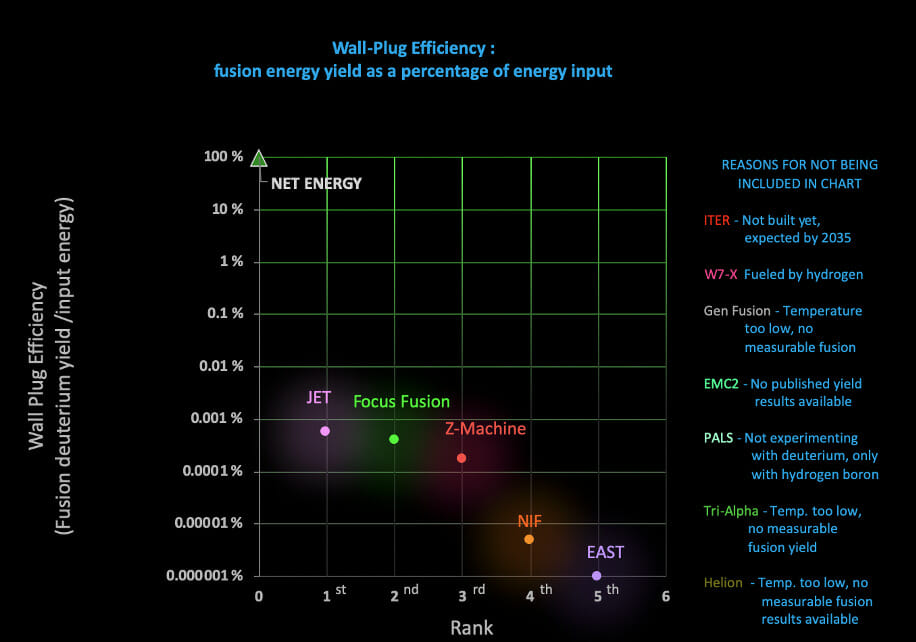Nuclear Power – Fission Reactors
Current nuclear reactors use uranium or plutonium fission to produce electricity. In fission, an atom will split apart into two smaller atoms and some high energy neutrons, which produce more fission reactions. There are many ways a radioactive atom can split apart into the two smaller atoms, called reaction products. But these reaction products all have one thing in common: they are all radioactive. There has been no viable solution as to what to do with this radioactive waste, some of which will be radioactive for hundreds of thousands of years or more.
Another danger comes from the high-energy neutrons. These neutrons slam into whatever is in their path. This creates heat, which in a nuclear power plant is used to boil water to run a steam-powered generator. However, heat is not the only thing neutrons produce. A neutron can enter the nucleus of a non-radioactive atom and make it radioactive.
So fission power plants have three problems with radioactivity:
- The fuel is radioactive.
- The reaction products are radioactive.
- The high-energy neutrons can take ordinary materials in the reactor building and make them radioactive.
Of course, the same technology that is used to make reactor fuel can also make the more purified fuel of atomic weapons.
Finally, nuclear reactors generate electricity by the same method that Edison developed—steam turbines. This means that fission reactors can never be extremely cheap, since most of the cost is in the energy conversion system.
Deuterium-Tritium Fusion with Tokamaks
Nuclear fusion has the potential to generate power without the radioactive waste of nuclear fission. But most fusion research today is focused on fusing deuterium and tritium using tokamaks, which are large, highly-complex devices. When deuterium and tritium are heated to sufficiently high temperatures (about 300 million degrees), they fuse, producing helium and high energy neutrons. These neutrons create heat and radioactive materials just as in a fission reactor.
Deuterium and helium are not radioactive and occur in nature. Tritium, however, is radioactive and does not occur in nature. It must be created in the reactor by using neutrons. So deuterium-tritium fusion still has two of the disadvantages of nuclear fission:
- The high-energy neutrons can take ordinary materials in the reactor building and make them radioactive
- Some of the fuel—tritium—is radioactive.
- In addition, tokamaks are by their nature very large, expensive and complex devices, using powerful magnets to keep the hot plasma in place. It is not at all clear that they could ever produce net energy, but if they did, it would be more expensive than that produced in fission reactors, since the steam conversion would be the same, and the energy producing core would be more expensive.
Comparison with Other Private Fusion Companies
Over two dozen private companies are now involved in the development of fusion energy generators. While nearly all these competitors have greater financial resources than LPPFusion, our approach is, by any scientific measure, far in the lead in moving toward the goal of a working fusion generator. Indeed, our results are also superior to those of all but a few of the far larger government fusion experiments.
The best comparison for fusion devices is how close they are to producing more energy out of the device than is put into it (this goal is called “net energy”). We have actually measured and reported in peer-reviewed publications the fusion energy yield that our device has produced. Only one of our competitors, HB11, have actually published the amount of fusion reactions in their devices and our results are 300 times better than theirs.
It is also possible to gain some idea of our competitive position by comparing our results with those of the most successful government-funded projects. In the chart below we can directly compare the total fusion energy output with total energy input to the device, using actual experimental results with the same deuterium fuel. In this comparison, LPPFusion ranks number 2, only behind the record results obtained by the JET tokamak in 1997. At present our results lag those of JET by a factor of one and a half.

